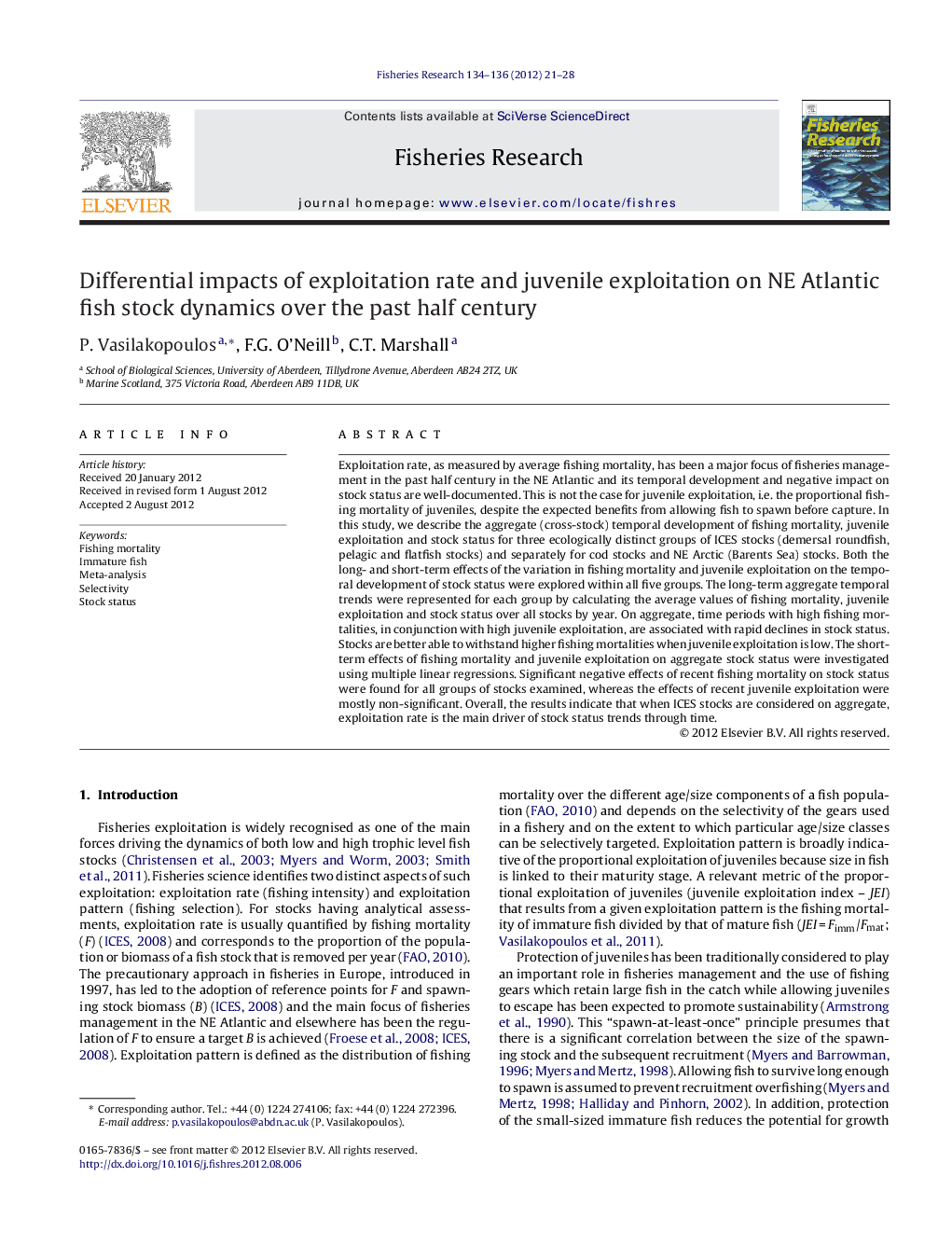| کد مقاله | کد نشریه | سال انتشار | مقاله انگلیسی | نسخه تمام متن |
|---|---|---|---|---|
| 4543238 | 1626832 | 2012 | 8 صفحه PDF | دانلود رایگان |

Exploitation rate, as measured by average fishing mortality, has been a major focus of fisheries management in the past half century in the NE Atlantic and its temporal development and negative impact on stock status are well-documented. This is not the case for juvenile exploitation, i.e. the proportional fishing mortality of juveniles, despite the expected benefits from allowing fish to spawn before capture. In this study, we describe the aggregate (cross-stock) temporal development of fishing mortality, juvenile exploitation and stock status for three ecologically distinct groups of ICES stocks (demersal roundfish, pelagic and flatfish stocks) and separately for cod stocks and NE Arctic (Barents Sea) stocks. Both the long- and short-term effects of the variation in fishing mortality and juvenile exploitation on the temporal development of stock status were explored within all five groups. The long-term aggregate temporal trends were represented for each group by calculating the average values of fishing mortality, juvenile exploitation and stock status over all stocks by year. On aggregate, time periods with high fishing mortalities, in conjunction with high juvenile exploitation, are associated with rapid declines in stock status. Stocks are better able to withstand higher fishing mortalities when juvenile exploitation is low. The short-term effects of fishing mortality and juvenile exploitation on aggregate stock status were investigated using multiple linear regressions. Significant negative effects of recent fishing mortality on stock status were found for all groups of stocks examined, whereas the effects of recent juvenile exploitation were mostly non-significant. Overall, the results indicate that when ICES stocks are considered on aggregate, exploitation rate is the main driver of stock status trends through time.
► A meta-analysis of the temporal development of 38 stocks in the NE Atlantic.
► Aggregate trends of exploitation rate, juvenile exploitation and stock status described.
► On aggregate, exploitation rate is the main driver of stock status through time.
► On aggregate, juvenile exploitation is less important for stock status development.
► Changes in overall selectivity would be less effective than regulating overall effort.
Journal: Fisheries Research - Volumes 134–136, December 2012, Pages 21–28